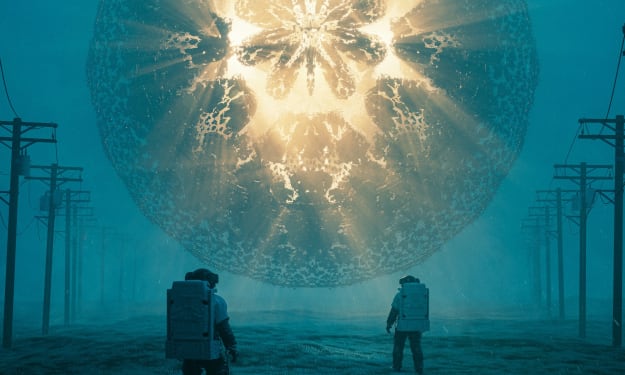history
The history of technology and technology throughout history; human innovation from the first stone tool to the iPhone and beyond.


Dominating Twitter Showcasing: Techniques for Progress in the Advanced Age
Title: Dominating Twitter Showcasing: Techniques for Progress in the Advanced Age Dynamic: In the computerized scene, virtual entertainment stages like Twitter have become vital devices for advertisers meaning to draw in with their crowd, fabricate brand mindfulness, and drive business development. With its constant nature and huge client base, Twitter offers remarkable open doors for organizations, everything being equal, to associate with their objective market and enhance their message. This far-reaching guide investigates the complexities of Twitter, showcasing, from understanding the stage's calculations to creating convincing substance and executing compelling promotional systems. By digging into cutting edge strategies and contextual investigations, this article furnishes advertisers with the information and apparatuses expected to bridle the force of Twitter and accomplish their showcasing targets.
Nuruddin AhmedPublished about a month ago in 01The Digital Shift
The article explores the rise of remote work and its technological implications, including the benefits, popular collaboration tools, infrastructure requirements, trends, challenges, employee well-being, implications for businesses, work-life balance, software efficiency, adoption strategies, and the conclusion on remote work technology advancements.
Timothy A RowlandPublished about a month ago in 01

Acer Aspire 3 A315-24P-R7VH: Slim Laptop with 15.6" Full HD IPS Display, AMD Ryzen 3 7320U Processor, Radeon Graphics, 8GB LPDDR5, 128GB NVMe SSD, Wi-Fi 6, Windows 11 Home in S Mode"
In today's fast-paced digital age, having a reliable and efficient laptop is essential for both work and leisure. With a myriad of options available in the market, finding the perfect balance of performance, portability, and affordability can be quite the challenge. However, one standout contender in the realm of slim laptops is the Acer Aspire 3 A315-24P-R7VH. This sleek and stylish laptop offers a compelling combination of features designed to meet the needs of modern users. From its vibrant Full HD IPS display to its powerful AMD Ryzen 3 7320U Quad-Core Processor and AMD Radeon Graphics, the Acer Aspire 3 delivers seamless performance for everyday tasks and multimedia consumption. With 8GB of LPDDR5 memory and a speedy 128GB NVMe SSD, users can expect swift multitasking and ample storage capacity. Additionally, the inclusion of Wi-Fi 6 ensures lightning-fast connectivity, while Windows 11 Home in S Mode provides a secure and user-friendly operating system experience. Join us as we delve deeper into the features and capabilities of the Acer Aspire 3 A315-24P-R7VH, exploring how it stands out in the competitive landscape of slim laptops.
Nhớ NguyễnPublished about a month ago in 01Navigating Social Media Bans
This article explores the impact of social media bans on digital marketing, including how bans can affect marketing strategies, recent instances of bans, strategies to adapt to bans, the impact on online advertising budgets and ROI, alternative platforms for digital marketing, the effects on marketing objectives, analyzing the consequences of bans, recommendations for policymakers and businesses, balancing traditional and digital marketing, and the future outlook for digital marketing.
Timothy A RowlandPublished about a month ago in 01Navigating Tech Regulation
An in-depth exploration of the global landscape of tech regulation, covering topics such as the impact of regulations on consumer protection and data privacy, regulatory trends and challenges faced by tech companies, the role of international organizations in harmonizing regulations, and the implications of tech regulations on innovation and the digital economy.
Timothy A RowlandPublished about a month ago in 01Navigating User Data Protection in the Era of Social Media Bans
The article explores the impact of social media bans on user privacy, including effects on targeted advertising, user behavior, data breaches, data protection measures, user reactions, legal implications, censorship, data security measures, online privacy, risks of monitoring, and public perception.
Timothy A RowlandPublished about a month ago in 01

House Sparrow (Passer domesticus)
The House Sparrow (Passer domesticus) is a small bird with a rich and complex history deeply intertwined with human civilization. In 1000 words, let's delve into its fascinating journey.


Cicada 3301
In the vast landscape of the internet, where anonymity and cryptography dance together, Cicada 3301 emerges as an enigmatic puzzle, shrouded in mystery and intrigue. This mysterious online phenomenon has captivated the minds of curious individuals around the world since its first appearance in 2012. What initially seemed like an elaborate recruitment process turned into a complex web of ciphers, symbols, and challenges that pushed the boundaries of conventional problem-solving.
Afeef KhanPublished about a month ago in 01

Unveiling the Future: A Comprehensive Guide to Apple's Latest Innovations
In the ever-evolving landscape of technology, one name continues to reign supreme – Apple. With each passing year, the Cupertino-based tech giant dazzles the world with groundbreaking innovations that redefine the way we interact with devices. From cutting-edge gadgets to revolutionary software updates, Apple consistently sets the bar high for innovation and excellence. In this comprehensive guide, we delve deep into the latest developments from Apple, covering everything from the highly anticipated Apple Vision Pro to the latest updates on Apple TV+ and beyond.
david millerPublished about a month ago in 01

The Power of Technology
In the busy city of Metronia, where skyscrapers towered above and neon lights lighted the streets below, technology was more than a convenience; it was way of life. Among the crowds running through the streets was a young woman named Maya, whose existence was inextricably linked to technological marvels.
Jonathan RosePublished about a month ago in 01Business CPL
No keyword ideas for “Rising gasoline costs kept inflation elevated in February, underscoring that the road to more modest consumer price increases following a pandemic-induced spike may continue to be bumpy. The climb in fuel costs and rent offset flat food prices. Overall prices rose 3.2% from a year earlier, up from 3.1% in January, according to the Labor Department’s consumer price index. On a monthly basis, costs increased 0.4% following a 0.3% gain the previous month. No keyword ideas for “What is the core inflation rate right now? Core prices, which exclude volatile food and energy items and are watched more closely by the Federal Reserve, increased 0.4% after a similar rise in January. That still lowered the annual increase from 3.9% to 3.8%, the smallest since May 2021. Protect your assets: Best high-yield savings accounts of 2023 No keyword ideas for “By the end of the year, Barclays expects overall inflation to slow modestly to 2.9% while the core reading drifts down to 3.1% - both still notably above the Fed’s 2% goal. Will the Fed lower interest rates in 2024? Fed Chair Jerome Powell told Congress last week that the central bank will likely trim its key interest rate this year but not until officials see more evidence that inflation is moving sustainably toward the Fed’s target. Since March 2022, the Fed has hiked its benchmark short-term rate from near zero to a 22-year high of 5% to 5.25% to corral inflation, though officials have paused since July.” No keyword ideas for “Inflation has been a major worry for many Americans, but a growing number have recently begun to feel more positive about the economy according to a poll conducted by The New York Times and Siena College. The survey, taken in late February, found 26% of registered voters nationwide felt the economy was good or excellent, a 6% jump from July. The increased optimism was most common among older Democrats. President Joe Biden still faces significant backlash over inflation from voters, and a slower-than-anticipated return to normal price increases could hurt his reelection chances. In a statement after the release of Tuesday's index report, Biden said, "Inflation is down two-thirds from its peak and annual core inflation is the lowest since May 2021. Wages are rising faster than prices over the last year and since the pandemic." However, he added, "As I said in my State of the Union, we have more to do to lower costs and give the middle class a fair shot." He said the federal budget he proposed Monday would address inflation by lowering prescription drug costs and rent, among other measures. Biden’s top economic adviser said the question of affordability will be a top priority for the president. “It is going to center on health care. It's going to center on housing. If you look in terms of the sources of affordability challenges, health care and housing are two of the biggest," Lael Brainard, director of the National Economic Council, told USA TODAY on Tuesday. "Of course, the president also is going to continue focusing on inflation at the grocery store where actually we saw prices being flat over the month.” It's unclear how much Biden will benefit from improved inflation numbers at the ballot box. For example, although grocery prices overall have risen modestly in the past year, "voters are wanting even lower prices at the grocery stores," says Gabriel Mathy, an economic professor at American University. "This could lead to them feeling nostalgic for the prices" under former President Donald Trump, Mathy added. And most voters' perceptions of the economy are influenced more by their partisan leanings than objective economic data, says Todd Belt, director of the political management program at George Washington University. But Mark Zandi, chief economist of Moody's Analytics, says Biden's argument for reelection will strengthen among independent voters if inflation numbers continue to improve in coming months. Contributing: Swapna Venugopal Ramaswamy, Rachel Looker”
Ranjit RayPublished about a month ago in 01

If You Wanna Fly to Mars, Visit Iceland First
When preparing for a long trip, you might look up the route on Google Maps, watch a walk-through on YouTube, or ask someone who has been there recently. But what if you're bound for a place where humans have never existed? I'm talking about our next-door neighbor, the Red Planet. NASA is planning a mission to Mars in the late 2030s or early 2040s, and that's not as far in the future as you might think. Rookie astronauts spend at least two years training just to go into space, and for every hour they spend in space, they need to spend ten hours underwater on Earth. This training only applies to spacewalks and the International Space Station, however. So far, some 600 people have been to space, but humans have never set foot on Mars. Traveling to this planet will require a different kind of training.
Abdul Hannan SaifPublished about a month ago in 01


















